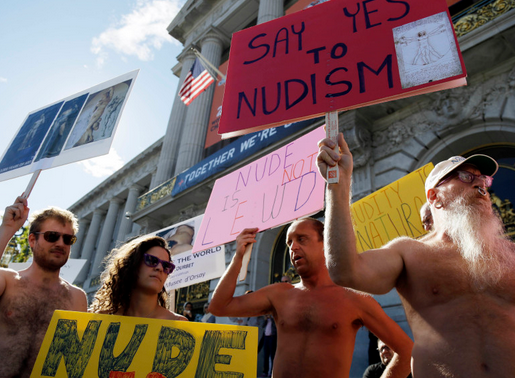
At 48, Albany resident Marie Loverde has never had breast cancer. Neither has her 86-year-old mother, Margaret.
Yet the women have joined 15,000 other families in a decades-long study to solve a troubling medical mystery: why big swaths of the Bay Area have abnormally high rates of invasive breast cancer.
"I have a daughter and she's only 9, so it's an issue for me personally," Marie Loverde said. "I wish there was something more definitive so we could say, 'OK, avoid this entirely.'"
That desire -- to understand what is causing the region's high breast cancer rates and to determine how women and girls can protect themselves -- has fueled numerous studies in the Bay Area involving tens of thousands of women and girls.
Researchers are looking at everything from genes -- at least two have been identified that place women at higher risk -- to environmental exposures and lifestyle factors such as diet, exercise and alcohol use.
They're also examining why Bay Area girls are starting to menstruate at a younger age, a national trend linked to increased breast cancer risk.
And some researchers are focusing on girls in pre-puberty and even younger.
"The novel thing that's going on now is to look at environmental exposures early in life," said Dr. Robert Hiatt, associate director for population sciences at the UC San Francisco Helen Diller Family Comprehensive Cancer Center.
"We know that it takes a long time for cancer to develop," said Hiatt, a leader of one study involving girls as young as 7 and 8.
Researchers first became aware of the region's high breast cancer rates in the early 1990s, particularly in Marin County.
In November, a new study identified two large "areas of concern" in the Bay Area with breast cancer rates 10 to 20 percent higher than the state average.
In 2008, the most recent year studied, the South Bay "area of concern" had 123 invasive breast cancer cases per 100,000 women, compared with a statewide rate of 95 cases.
The North Bay area of concern had 112 cases per 100,000 women.
The two areas include the western half of Contra Costa County, the northernmost part of Alameda County, and a swath running around the southern end of San Francisco Bay through Alameda, Santa Clara and San Mateo counties.
Marie and Margaret Loverde are in the Child Health and Development Studies, which began nearly 50 years ago with women in the Kaiser Foundation Health Plan who were pregnant between 1959 and 1967.
Margaret and other participants were asked about their health, lifestyle and experiences that could influence their pregnancy.
Researchers also took blood samples to check for exposure to chemicals such as DDT and other pesticides, as well as polychlorinated biphenyls (PCBs), a chemical compound widely used before 1977 in electrical equipment, paints, pesticides and adhesives.
Now researchers are asking the middle-age daughters of these women -- like Marie Loverde -- to participate. One goal is to learn whether there is a link between a mother's environmental exposures and her daughter's breast cancer risk, said Barbara Cohn, who directs the study for the Public Health Institute in Oakland.
Following 15,000 families through several generations is "a unique opportunity to look at very critical periods in the life of the breast," Cohn said. This was the first study to link DDT and breast cancer and to reveal that girls are particularly vulnerable to DDT before puberty.
Although DDT and PCB are now banned, women today are exposed to other chemicals found in many homes, including flame retardants in furniture, and bisphenol A (BPA) and phthalates, key ingredients in modern plastics.
"Some of these chemicals are thought to interfere with endocrine functioning," Cohn said. "There is an urgent need to know whether there are controllable exposures that we can identify."
Hiatt is involved with another study focusing on 7- to 8-year-old girls in western Contra Costa, Alameda, Marin and San Francisco counties, as well as in Cincinnati and New York. Investigators are taking blood and urine samples annually from the 1,200 participants to check for environmental exposures. They're also tracking diet, physical activity, smoking and the beginnings of puberty and menstrual periods.
It used to be that the average girl's period began at age 17. Today, 12 or earlier is common.
"It's changed five years over a century," Hiatt said. "That's pretty remarkable."
One theory among researchers, Hiatt said, is the longer a woman is exposed to the surges in estrogen that occur during menstruation, the greater her breast cancer risk.
That could explain why girls who start their periods earlier, women who go through menopause later, those who never have children and those who have their first child at an older age all have a higher risk.
One of the largest statewide studies involves 133,400 current or former public school teachers and administrators in the California State Teachers Retirement System.
Begun in 1995, this study has found higher-than-expected rates of breast cancer among teachers compared with statewide averages. The participants are answering questions about everything from diet and exercise to their medications, hormone therapies and whether they use electric blankets or live near power lines, said Christina Clarke, a research scientist with the Fremont-based Cancer Prevention Institute of California.
Another small pilot study based in the Bay Area will look at the differences in breast cancer rates among subgroups of the Asian population. U.S.-born Japanese, Chinese and Filipino women, for example, have higher breast cancer rates than foreign-born women from those countries, said Scarlett Lin Gomez, a research scientist with the Cancer Prevention Institute. What is it about American diet and culture that might contribute to this?
Women who have never been touched by breast cancer, such as Marie and Margaret Loverde, are included in studies so researchers can compare what is different about their experiences with those who develop cancer.
Marie Loverde is among those eager for answers, especially as she thinks about her daughter growing up.
"I do think it needs a lot of attention," she said. "I would like to get to the bottom of it."
Sandy Kleffman covers health. Contact her at 510-293-2478. Follow her at Twitter.com/skleffman. ___
(c)2013 the Contra Costa Times (Walnut Creek, Calif.)
Visit the Contra Costa Times (Walnut Creek, Calif.) at www.contracostatimes.com
Distributed by MCT Information Services
